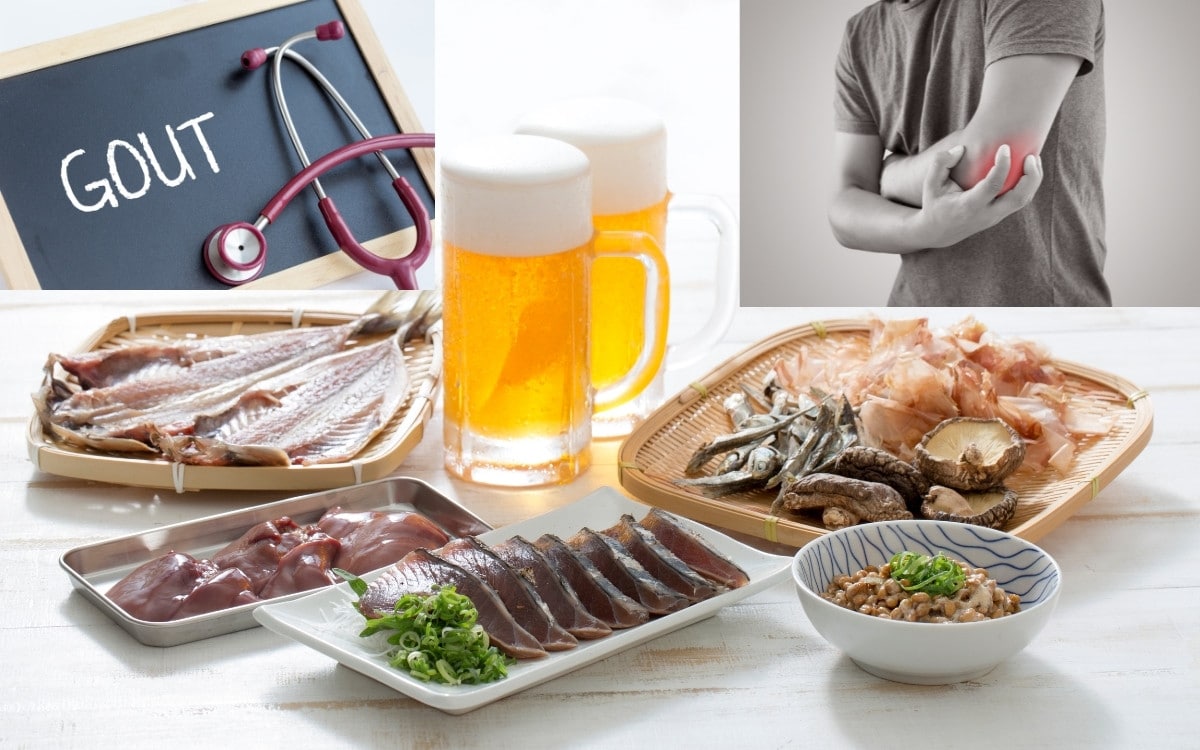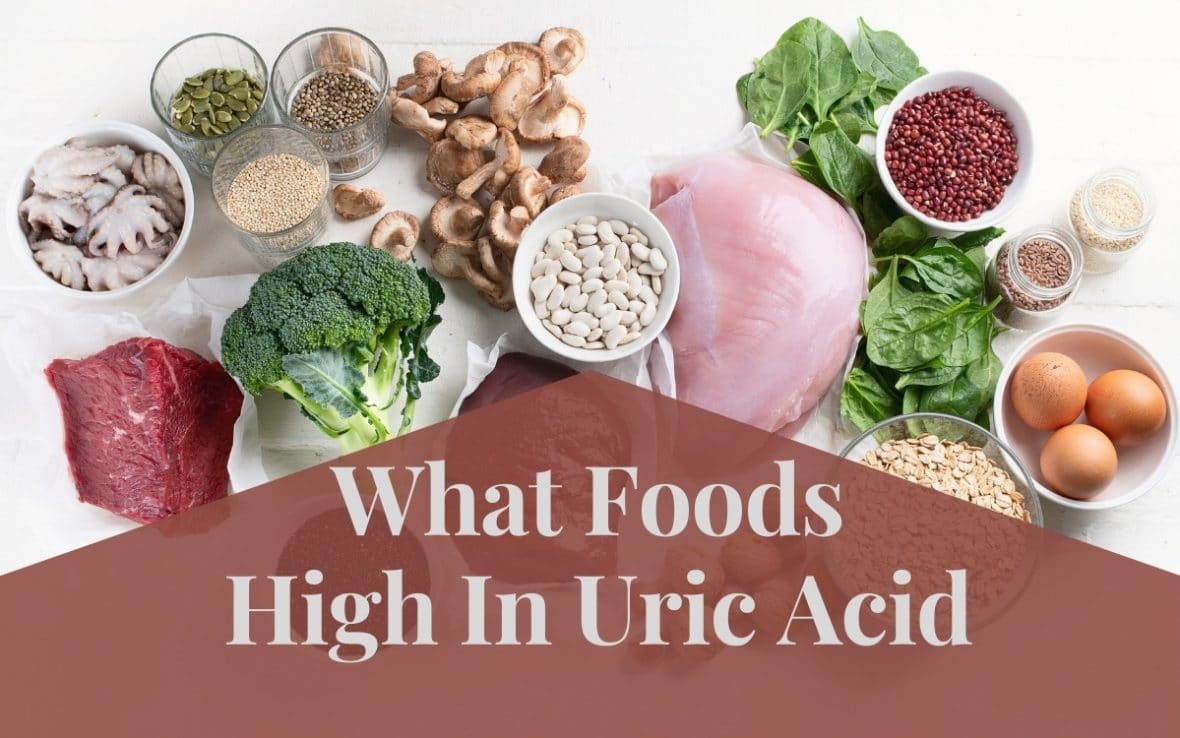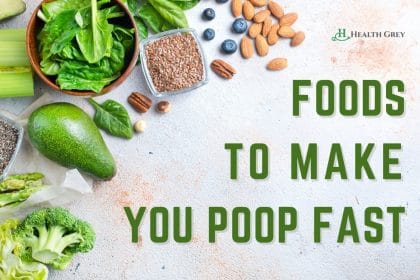What foods are high in uric acid? Purine rich foods like meat, seafood, poultry, or organ meats can cause your uric acid levels to spike, which can lead to the development of gout.
When the body digests purine rich foods, uric acid is produced as a byproduct. Purine is a non-essential chemical, which means it may be made by the body and ingested by diet. Because high uric acid levels increase the chance of developing gout, managing foods are high in uric acid level is an essential subject for those with gout risk factors. We’ll look at the link between purines in your diet, uric acid, and gout in this article.
If you’ve ever had the experience of having a flare-up of painful inflammation in your joints, you know how unpleasant it can be. For some people, arthritis pain is a constant companion, or they have a gouty arthritis flare-up every so often. In the past, doctors have suggested purine rich foods as a treatment option for gout, as these foods have been shown to raise the amount of uric acid in the body. However, more recently, a large body of research has challenged this idea.
Here is a detailed article about foods that are low in purine or low-purine diet.
Uric Acid, Purines, and Gout

Gout is a typical joint disease that affects many people. It is caused by an excess of uric acid in the circulation, which produces urate crystals in the joints, causing inflammation, swelling, and extreme pain. Uric acid is eliminated through urine after being filtered out by the kidneys. If you eat a purine-rich diet your uric acid levels can rise to dangerous levels.
Foods high in uric acid:

Foods you consume and foods you don’t eat can affect your gout by raising or lowering your blood uric acid levels. If you have any of the diseases that are frequent in persons with gout, such as hyperlipidemia, hypertension, diabetes, obesity, or impaired glucose tolerance, you should make dietary changes.
The most major nutritional aim for gout is to avoid foods that contain a lot of purine. In an ideal world, you’d eat very few foods that are rich in purine and just a tiny number of foods that are moderately high in purine. The foods rich in purine are following.
- Anchovies, sardines, mackerel, scallops, herring, mussels, codfish, trout, and haddock are one of the fish, seafood, and shellfish.
- Bacon, turkey, veal, venison, liver, cattle kidney, brain, and sweetbreads are some of the meats
- Beverages containing alcohol
Risk factors for developing gout:
Gout is a common and painful joint disease that primarily affects the big toe and hands. The difference between gout and arthritis is that arthritis is the inflammation of the joints, while gout primarily affects the joints. The medical term gout is derived from the Greek word “goût” which means “taste”.
Diet:
The purine rich foods, sugar, and alcohol can elevate uric acid levels in your blood and increase your risk of getting gout. Fructose is a substance present in fruits, and studies have shown that fructose-sweetened foods raise the risk of gout.
Obesity:
Research has revealed that persons who are obese or overweight have a higher risk of gout than those who are of normal body weight, regardless of sex or race.
Gender:
Because women’s uric acid levels are lower than men’s, gout affects them more frequently. Women’s uric acid levels grow after menopause, becoming more comparable to men’s, and their risk of gout rises.
Medical conditions:
Some medical problems, such as renal disease, diabetes, metabolic syndrome, and high blood pressure, are linked to an increased risk of gout.
Family history:
Gout has a genetic component, which means that if other members of your family have been diagnosed with it, you are more likely to get it as well.
Age:
Gout generally strikes men between the ages of 30 and 50, and women are more susceptible to gout after menopause.
How to reduce uric acid in the body?
If you are looking to reduce uric acid in the body, you may want to avoid beer and beef, and instead, eat spinach and kidney beans.
Final verdict:
Diet alone may not be adequate to prevent gout or reduce the number of gout flares since numerous variables influence the quantity of uric acid in the blood. However, Foods are high in uric acid should be avoided. Your diet should not be overlooked because it may assist you in regulating more than simply the amount of purine rich foods. It can aid in the management of diseases that impact your kidneys’ general health, including blood pressure, diabetes, and weight.





One Comment
Pingback:
October 7, 2021 at 4:33 pm